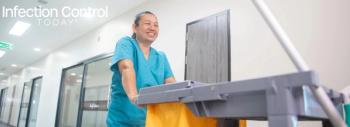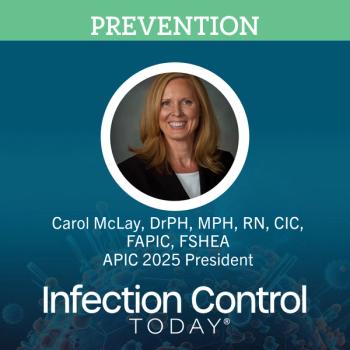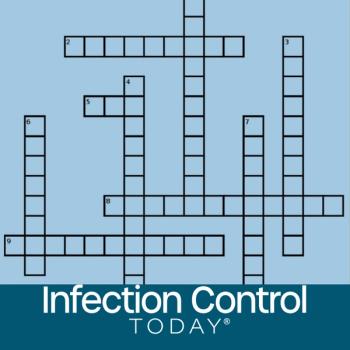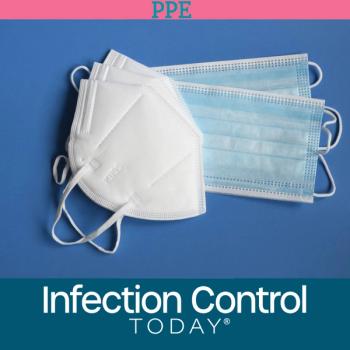
- Infection Control Today, July-August 2022, (Vol. 26, No. 6)
- Volume 26
- Issue 6
Top 3 Trends in Health Care Cleaning and Disinfection
Infection preventionists and the equipment and cleansers they use gained a spotlight during the COVID-19 pandemic. These include both established and innovative materials.
The COVID-19 pandemic has contributed to rapid adjustments and innovations in infection prevention and public health practices over the past 2 years. Health care cleaning and disinfection also gained a spotlight as a key piece to the infection prevention program in facilities. While this was not a new concept for infection preventionists and environmental services departments, it brought a public awareness to the various types of disinfectants and how crucial cleaning of surfaces is to decrease risk of disease transmission.
Continuously Active Disinfection (CAD) Chemicals
The first innovation in cleaning and disinfection is continuously active disinfection (CAD) chemicals. Previously, CAD was a focus of materials, not chemicals. Copper- and silver-infused items, such as bedside tables, bed rails, IV poles, linens, and curtains were brought to the market as solutions to contamination of objects and a passive way to break the chain of infection for indirect and direct contact. Ultimately, there were challenges with this type of solution, including the cost of implementation and evidence to support the effectiveness. A 2016 ECRI report found that there was not a statistically significant difference between copper treated rooms and control rooms with no copper fixtures1. Based on the review, the return on investment was not evident for having a room full of copper fixtures—let alone an entire ward.
Newer technology with disinfectants that provide continuous activity is emerging and shows some promise that it may be effective with extended kill times, and potentially decrease risk of organism transmission in the environment. One such product, which is a pre-moistened wipe or spray system, has been shown to actively kill pathogens for up to 24 hours2. More studies need to be completed in real-life situations to determine the effectiveness of such products; however, theoretically they would be a less expensive alternative to metal-infused surfaces. Utilization of CADs in areas where there is high traffic, but not as frequent cleaning, would be ideal. Such areas would be emergency department waiting areas, clinic lobbies, hospital chapels, outer areas of procedural and surgical rooms, and nurse and physician charting areas.
Innovations in Delivery Systems
Second, innovations in delivery systems for disinfection products have developed recently. Ultraviolet (UV) technology is not a new concept, having been introduced as a portable system for health care facilities several years ago. However, latest updates to the products available include shorter run times and smaller devices that can accommodate cell phones or stethoscopes. Also, misting devices that efficiently spread disinfectants such as hydrogen peroxide offer a delivery system that is efficient for large spaces. Multiple studies have looked at the use of UV and misting systems, with statistically significant results in reduction of adverse patient outcomes3. Two of the main challenges with these systems are cost and workflow constraints. Foundations with donors’ contributions or grants may help alleviate some of the costs, but infection preventionists need to work with environmental services and facility leadership to develop workflows for the use of these devices in the most efficient and beneficial manner to maintain throughput.
Cleaning and Disinfection of Shared or Reusable Equipment
Finally, cleaning and disinfection of shared or reusable equipment continues to be a challenge for infection preventionists. Accreditation bodies have increased their awareness on this topic, looking at glucometers, stethoscopes, and other equipment and instruments that travel from room to room. Similarly, the updated Association for the Advancement of Medical Instrumentation (AAMI) standard ST91 for flexible endoscopes will transform the way many health care facilities handle the disinfection, sterilization, and storage of their scope4. Sterilization of scopes and the increased use of disposable scopes will be hot topics going forward as infection preventionists partner with endoscopy and sterile processing colleagues.
As health care environmental hygiene continues to evolve, one concept remains consistent: basic practices of cleaning and disinfection by trained and competent staff are a foundation upon which these latest technologies and updates to standards build upon. Without a skilled environment services and sterile processing team, adjuncts to daily cleaning and disinfection will not be effective. As with many infection prevention initiatives, a bundled approach works best to target multiple steps along the chain of infection and improve both human and process factors along the way.
References
- Antimicrobial Copper Surfaces for Reducing Hospital-acquired Infection Risk: Evidence Summary of Selected Outcomes. ECRI Institute. Accessed May 18, 2022. 063 - Antimicrobial Copper Surfaces for Reducing Hospital-acquired Infection Risk (ecri.org).
- Heben JN, Fauerback LL. Continuously Active Disinfection: Minimizing the Role of Surface and Equipment Recontamination in the Transmission of Healthcare Pathogens. Accessed May 29, 2022. Sani-24_White-Paper_05190657.pdf.
- Peters A, Schmid MN, Parniex P, Lebowitz D, et al. Impact of environmental hygiene interventions on health care-associated infections and patient colonization: a systematic review. Antimicrobial Resistance and Infection Control. February 19, 2022.
- Peters J. Updated AAMI ST91 for Endoscope Reprocessing: an HTM Perspective. Accessed May 30, 2022. https://www.aami.org/news/article/updated-aami-st91-2020-for-endoscope-reprocessing-an-htm-perspective.
Articles in this issue
over 3 years ago
Infection Control Today's® Product Locatorover 3 years ago
The Role of Health Care Laundry in Infection Preventionover 3 years ago
We Need a Revolutionover 3 years ago
Did Stethoscope Hygiene Improve Before and After COVID-19?over 3 years ago
Environmental Hygiene Shows Severe Issues in Global Surveyover 3 years ago
Testing Biosafety Measures Should Be Appropriate Not Excessiveover 3 years ago
Monkeypox Details for Infection PreventionistsNewsletter
Stay prepared and protected with Infection Control Today's newsletter, delivering essential updates, best practices, and expert insights for infection preventionists.






